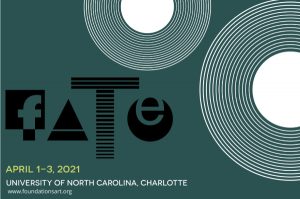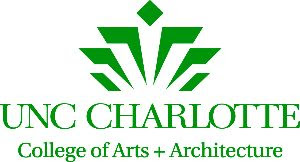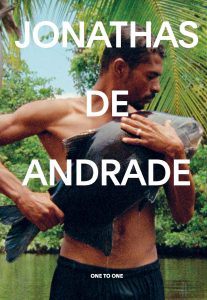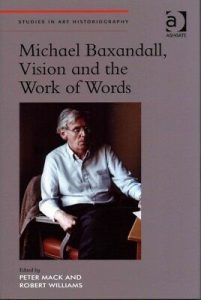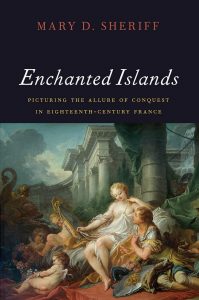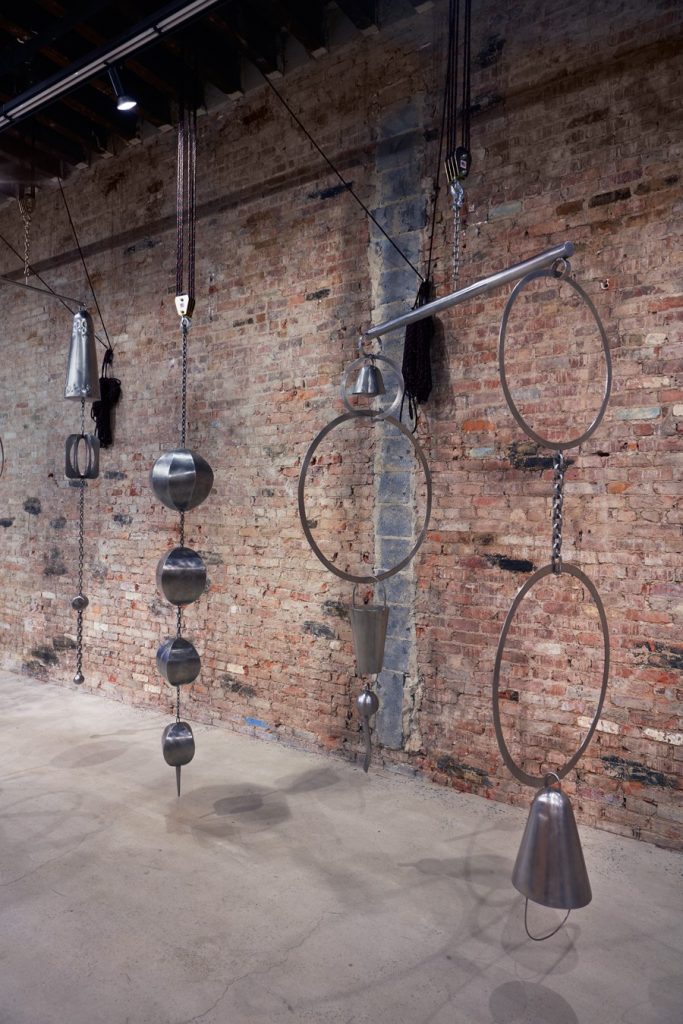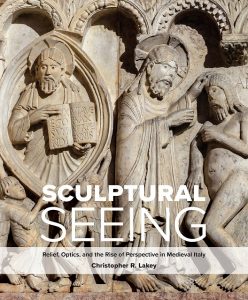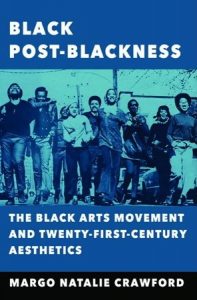CAA News Today
New in caa.reviews
posted by CAA — Jan 17, 2020
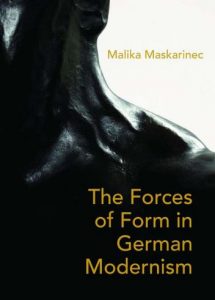
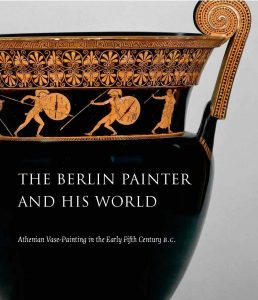
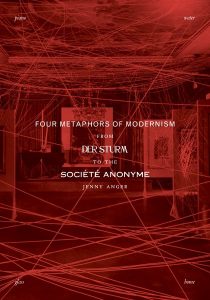
Joyce S. Cheng discusses The Forces of Form in German Modernism by Malika Maskarinec. Read the full review at caa.reviews.
Nikolaus Dietrich reviews The Berlin Painter and His World: Athenian Vase-Painting in the Early Fifth Century B.C., edited by J. Michael Padgett. Read the full review at caa.reviews.
Max Koss writes about Jenny Anger’s Four Metaphors of Modernism: From Der Sturm to the Société Anonyme. Read the full review at caa.reviews.
Affiliated Society News for January 2020
posted by CAA — Jan 07, 2020
Happy New Year! Affiliated Society News shares the new and exciting things CAA’s affiliated organizations are working on including activities, awards, publications, conferences, and exhibitions. See January’s news below.
Interested in becoming an Affiliated Society? Learn more here.
Community College Professors of Art and Art History
Please join the Community College Professors of Art and Art History at this year’s CAA Conference in Chicago for two events on Wednesday, February 12, 2020.
From 12:30 PM – 1:30 PM in the Lobby Level Continental B room, join us for our annual Business meeting and project share. Bring an idea or project to share with your community college colleagues. Following our business meeting (in the same room) is our session, Taking a New Look: Creating Change in the Studio and Art History Classrooms. Co-Chaired by Susan Altman and Monica Anke Hahn, hear Richard J. Moninski, Tyrus R. Clutter, Rachael Bower and Ross McClain talk about creating meaningful change in their studio and art history programs.
Women’s Caucus for Art
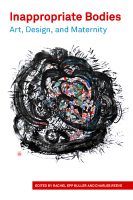
Thursday, February 13, 12:30pm: book presentation and discussion of Inappropriate Bodies: Art, Design, and Maternity, with editors Rachel Epp Buller and Charles Reeve and contributor Niku Kashef
Thursday, February 13, 6:00pm: WCA/CAA panel on Amplifying Inclusion: Intersectional Feminism in Contemporary Curatorial Practice, with presenters Tanya Augsburg, Priscilla Otani, Karen Gutfreund, and Rosemary Meza-DesPlas, with discussant Maria Buszek.
CAA members are also invited to attend WCA exhibitions in Chicago. The Young Women’s Caucus organized Intersectional History at WomanMade Gallery and the National WCA exhibition, Collectively Shifting, is hosted by The Bridgeport Art Center.
New Media Caucus
The New Media Caucus is happy to welcome the following continuing and new board members following a successful 2019-2020 Election Cycle.
Chair of Communication Committee
KT Duffy
Assistant Professor of Art, Northeastern Illinois University
Board Members
Farhad Bayram
Assistant Professor, Indiana State University
Victoria Bradbury
Assistant Professor, The University of North Carolina – Asheville
Meredith Drum
Assistant Professor, School of Visual Arts, Virginia Tech
Zach Duer
Assistant Professor, School of Visual Arts, Virginia Tech
Sue Huang
Assistant Professor, University of Connecticut
Chelsea Thompo
Visiting Professor, Grand Valley State University
The New Media Caucus (NMC) is a 501c3 dedicated to supporting artists and scholars engaged in new media art. More information about the NMC and our mission can be found at newmediacaucus.org.
Society for the History of Collecting
We are looking forward to our debut sessions at CAA in February and will be using our inaugural business meeting to host a conversation about opportunities for research and funding in the field (the Friday lunchtime slot).
We are also excited to announce that the Americas chapter is expanding with Sophia McCabe spearheading a West Coast initiative.
In NY our upcoming events include a curatorial walk-through with Inés Katzenstein of Sur moderno at MoMA (January 8) and a collaboration with Master Drawings New York on Saturday, January 25. Talking Drawings—a conversation amongst four women collectors of works on paper will be moderated by Dr Jennifer Tonkovich of The Morgan Library & Museum. More information can be found here.
Society of Architectural Historians
Are you planning to attend the College Art Association Annual Conference in Chicago? If so, please join SAH’s conversation about two of our most exciting current initiatives, SAH Archipedia and the SAH Data Project, at the SAH Business Meeting on Wednesday, February 12, 12:30–1:30 pm. Pauline Saliga, SAH Executive Director, will discuss the recent launch of SAH Archipedia. This growing, open-access, mobile-friendly online resource will soon provide new opportunities to publish interpretive research about the history of the built environment. Sarah M. Dreller, SAH Postdoctoral Researcher in the Humanities, will answer questions about the purpose, scope, and timeline of the SAH Data Project, a Mellon-funded study that is assessing the status of the field of architectural history in higher education. The project will launch a key component of the data-gathering effort, online surveys for students, faculty, and program chairs/administrators, right before the CAA Annual Conference.
Early Registration is open for the SAH 2020 Annual International Conference in Seattle, Washington, April 29–May 3. Nearly 700 SAH members from around the world are expected to convene at the Renaissance Seattle Hotel to present new research on the history of the built environment, network, and participate in roundtables, seminars, workshops, tours and more. Early registration closes March 3, 2020.
SAH will offer a total of 36 paper sessions at its 2021 Annual International Conference in Montréal, Québec, Canada. The Society invites individuals and those representing SAH chapters and partner organizations to submit a session proposal for the Montréal conference. Since the principal purpose of the SAH annual conference is to inform attendees of the general state of research in architectural history and related disciplines, session proposals covering every time period and all aspects of the built environment, including landscape and urban history, are encouraged. The submission deadline is January 14, 2020.
Visual Resources Association
The Visual Resources Association (VRA) has planned two events for the 2020 Chicago conference and we welcome CAA conference attendees to join us for a full session and open business meeting turned interactive forum.
Both events take place on Wednesday, February 12th, starting with a VRA Business Meeting scheduled midday (free and open to the public), which we have turned into a discussion forum opening with a presentation entitled “From Archive to Classroom: The Use of Omeka and Companion Tools in the Curation of Digital Stories and Exhibits” involving Matt Taylor, Director of the Media and Design Studio, and Rebecca Zorach, Mary Jane Crowe Professor of Art and Art History, as well as their students from Northwestern University. It will be followed by what will surely be an engaging discussion about online exhibitions and other current trends in the field of visual resources.
In the afternoon, a formal session has been organized entitled, “Hands-On to Eyes-On: From Material Collections to Digital Exhibitions“ chaired by Bridget Madden, Associate Director of the Visual Resources Center, in the Department of Art History at the University of Chicago. A distinguished panel of artists, art historians, librarians, museum and information professionals will discuss the hands-on use of materials and museum collections to allow students to apply their knowledge in real-life contexts (full slate below). The presenters will discuss: the use of a materials collection in teaching art history survey courses to studio art and design students; fashion and textile resources transitioning from physical to digital collections for enhanced access; and a two-term curatorial practice course sequenced to design and install a museum exhibition. In all cases, the collections used in teaching are prioritized and sustained, not treated as occasional visits or demonstrations. The role of professional staff supporting these collections and facilitating their use by faculty and students is integral. It will be shown how effective these collaborations can be, including how they can lead to more engaging, active learning experiences in the classroom. The session will take place at 4pm at the Hilton Chicago in the Wilford C room as follows:
1) “Materials in Context: Experiential Learning in Art History” at the Minneapolis College of Art and Design with Allan T. Kohl, Librarian in charge of Visual Resources and Library Instruction, presenting a collection curator’s perspective, partnered with Jessica M. Dandona, Associate Professor of Art History, providing a faculty perspective.
2) “Materiality Made Visible” will be presented by Melanie E. Emerson, Dean of the Library + Special Collections, from the School of the Art Institute of Chicago.
3) “Exhibition in Practice” at the Smart Museum of Art, University of Chicago, will be presented with Leslie Wilson, Curatorial Fellow for Diversity in the Arts, providing “A Perspective from the Classroom” and Berit Ness, Assistant Curator of Academic Initiatives, talking about “Execution in the Museum.”
The Visual Resources Association is a multidisciplinary organization dedicated to furthering research and education in the field of image management within the educational, cultural heritage, and commercial environments (http://vraweb.org/).
For additional information, please contact Maureen Burns, VRA CAA Affiliate Society Representative at moaburns@gmail.com.
Foundations in Art: Theory and Education (FATE)
There is a date change to the original announcement of the FATE Biennial Conference.
18th Biennial Foundations in Art: Theory and Education Conference will be hosted by University of North Carolina Charlotte. Mark your calendars for April 15-17, 2021 and make plans to be there!
Mid-America College Art Association
Invite for new prospective board members:
The Mid-America College Art Association is seeking motivated artists, and art faculty, to become members of an energetic team who provide avenues for fellowship in the arts on the collegiate level. All media are welcome, we give preference to artists that have expertise in Art Finance, Art Non-Profits, Graphic Design, Digital Arts, Art History, Art Administration and Art Therapy, Art Education, Art Interdisciplinary, Art Performance. Please send inquiry and letter of interest and CV to Heather Hertel, MACAA President: heather.hertel@sru.edu.
view our website: www.macaart.org Instagram: midamericacollegeartassoc
SECAC
SECAC 2019: 75th ANNUAL CONFERENCE
In October, SECAC met for the 75th time in Chattanooga, hosted by The University of Tennessee at Chattanooga. 672 members representing 330 institutions participated in 140 sessions. Highlights of the conference included a keynote address by Sharon Louden at the Hunter Museum of American Art, the 2018 SECAC Artist’s Fellowship Exhibition at the ConTemporary Cress Gallery,the SECAC Juried Exhibition, at Stove Works satellite gallery, and the SECAC Mentoring Program.
At the annual business meeting, SECAC President Sandra Reed of Marshall University introduced new members of the Board of Directors: Arkansas, Kevin Cates, University of Arkansas at Little Rock; Florida, Jeff Schwartz, Ringling College of Art and Design; Louisiana, Rachel Stephens, The University of Alabama; Mississippi, Elise Smith, Millsaps College; Tennessee, Christina Vogel, The University of Tennessee at Chattanooga; and At-Large Seat #1, Dennis Ichiyama. Also new to the board are Michael Borowski, Virginia Tech, representing Virginia, and Sunny Spillane, University of North Carolina at Greensboro, serving as an officer in the new role of Secretary.
SECAC 2020 will be hosted by Virginia Commonwealth University in Richmond, October 21–34. Regularly-updated information, and links to calls are published here. The SECAC submissions site is here.
AWARDS PRESENTED AT SECAC 2019
- The SECAC Artist’s Fellowship was awarded to Adrian Rhodes, University of South Carolina, for Blood and Honey.
- Yumi Park-Huntington, Framingham State University in Massachusetts, received the William R. Levin Award for Research in Art History Before 1750 for Monumental Structure, Sacred Landscape, and Cosmology at the Late Formative Period Peruvian Site of Jequetepeque-Jatanca.
- Stephen Mandravelis, The University of Tennessee at Chattanooga, received the William R. Levin Award for Research in Art History Since 1750 for Access to Avenues of Art: Mapping the Cultivation of Rural Art Markets through the American Agriculturalist, 1850-1880.
- The SECAC Award for Excellence in Teaching was presented to Jenny Hager, University of North Florida.
- The SECAC Award for Outstanding Exhibition and Catalog of Contemporary Materials was given to William U. Eiland for Clinton Hill, Georgia Museum of Art, 2018.
- The Georgia Museum of Art received the SECAC Award for Outstanding Exhibition and Catalog of Historical Materials for Crafting History: Textiles, Metals, and Ceramics at the University of Georgia.
- The 2019 SECAC Award for Outstanding Professional Achievement in Graphic Design was presented to Meena Khalili, University of Louisville.
- The 2019 SECAC Award for Excellence in Scholarly Research and Publication was awarded to Peter Scott Brown, University of North Florida, for The Riddle of Jael: The History of a Poxied Heroine in Medieval and Renaissance Art and Culture.
Visit SECAC Awards for details.
Twenty-two graduate students received Gulnar Bosch Travel Awards: Melissa Airy, University of Iowa; Olivia Armandroff, University of Delaware; Alyssa Bralower, University of Illinois at Urbana-Champaign; Lauren Cesiro, Binghamton University; Dominik Eckel, DFK Paris / University of Cologne; Isabel Fontbona Mola, University of Girona, Spain; Dilmar Mauricio Gamero Santos, Temple University; Naghmeh Hachempour, Georgia Southern University; Dana Hogan, Duke University; Julia Katz, Rutgers University-New Brunswick; Ximena Kilroe, CUNY; Julia Kirshaw, Florida State University; Tess McCoy, University of New Mexico; Melissa Miller, University of Arkansas at Little Rock; Jonathan Morgan, Institute for Doctoral Studies in the Visual Arts; Danielle Powell, University of Central Florida; Chris Slaby, College of William & Mary; Sara Anne Stepp, Univeristy of Kansas; Barbara Tyner, Centro de Cultura Casa Lamm, Mexico City; Marina Tyquiengco, University of Pittsburgh; Or Vallah, University of Washington; and Jennifer Vess, University of Iowa.
At the SECAC 2019 Annual Juried Exhibition, Juror Amelia Briggs, Director of David Lusk Gallery, awarded First Place to Anne Herbert, Alabama School of Fine Arts, for Event Horizon; Second Place: to Chung-Fan Chang, Stockton University, for Guangwu’s Land; Third Place to Natalie Harrison, Samford University, for Pastel Tapestry 1; and Honorable Mention to Mary Laube, The University of Tennessee, for Queen Min’s Hair. The Co-Directors’ Award was presented to Ann Moody, University at Buffalo, for Lickety-Split.
American Society of Appraisers
Upcoming educational offerings:
· February 3, 2020 | Fundamentals of Jewelry Appraisal | Tucson, AZ
· February 5, 2020 | Introduction to the Chinese Art Market, Challenges and Opportunities | Webinar
· March 2, 2020 | Fundamentals of Jewelry Appraisal | Carlsbad, CA
· March 16-17, 2020 | Appraising Fine Arts Overview | Chicago, IL
· March 20, 2020 | Personal Property Appraisal Report Writing Update | Reston, VA
· May 30-June 14, 2020 | 9th Annual Summer Appraisal Camp | Purchase, NY
· October 29, 2020 | The Decorative Art and Mechanics of Antique Clocks | Webinar
Historians of Netherlandish Art
CAA CONFERENCE CHICAGO, February 12-15th, 2020:
HNA RECEPTION: Friday, February 14th, between 5:30 and 7 pm. Private Dining Room 4, located on the third floor of the Hilton
HNA SESSION:
Thursday February 13th, 10:30-12:00 pm
Hilton Chicago – Lower Level – Salon C-5: 10
Historians of Netherlandish Art
Joanna Sheers Seidenstein, Harvard Art Museums and Sarah Walsh Mallory, Harvard University
SESSION run by HNA members:
Thursday, February 13th, 6:00-7;30 PM
Hilton Chicago – 3rd Floor – Wilford C
Re-Assessing the Northern European Male Nude
Martha Hollander, Hofstra University and Lisa Rosenthal, University Of Illinois at Urbana-Champaign
JOURNAL OF THE HISTORIANS OF NETHERLANDISH ART:
JHNA has just published a special guest-edited issue on the art of Gerard de Lairesse (Winter 2020, vol. 12:1). The editors include Eric Jan Sluijter (University of Amsterdam Emeritus); Elmer Kolfin (University of Amsterdam); Jasper Hillegers (Salomon Lilian Gallery, Amsterdam); and Marrigje Rikken (Frans Hals Museum, Haarlem).
JHNA has received a grant from the Association of Research Institutes in Art History (ARIAH) to support the development of a hot spot feature for images in the article by Melanie Gifford on Rubens’s Fall of Phaeton, National Gallery of Art, Washington, which appeared in the Summer 2019 issue (vol. 11:2). Watch for this digital feature in Gifford’s essay in 2020 as well as in other essays to come.
New in caa.reviews
posted by CAA — Dec 06, 2019
Luke A. Fidler reviews the exhibition and catalog Jonathas de Andrade: One to One. Read the full review at caa.reviews.
Ian Verstegen discusses Michael Baxandall, Vision and the Work of Words, edited by Peter Mack and Robert Williams. Read the full review at caa.reviews.
Aaron Wile writes about Enchanted Islands: Picturing the Allure of Conquest in Eighteenth-Century France by Mary D. Sheriff. Read the full review at caa.reviews.
CWA Picks for December 2019
posted by CAA — Dec 03, 2019
CAA’s Committee on Women in the Arts selects the best in feminist art and scholarship to share with CAA members on a monthly basis. See the picks for December below.
…for Gloria Kisch
dieFirma, New York, New York
October 13, 2019 – January 5, 2020
The inaugural exhibition at dieFirma, a new gallery and arts space nestled in the bustling Bowery at 32A Cooper Square, New York, celebrates the life of multidisciplinary artist Gloria Kisch (1941-2014). An impressive presentation reveals the range and significance of Kisch’s abstract sculptures and highlights her late series of metalwork constructions called Bells (2000-2003) and Flowers (2007-13); functional furniture and objects (benches and chairs); and early hard-edge paintings from the 1960s. Also displayed are ephemera from the artist’s extensive personal archive. A large body of drawings by British artist Jane Gifford accompanies the installation. Gifford turned to Kisch’s sculptures for inspiration and produced a collection of smaller watercolors that offer a fascinating interplay and homage; the gentle conversion of three-dimensional volumetric space through line and gesture encourages a subdued reciprocity between the two artists. Kisch’s metalwork equally invites multiple readings and comparisons to likeminded artists who crossed media and arbitrarily ignored traditional fine art, craft and design hierarchies. Utilizing hand-forged stainless steel, Kisch’s statuesque Bells take on a corporeal presence—linked geometric elements vertically hang, some extenuated and stretched, others widely berthed. But it is through their mythic presence that the viewer makes connections to sculptors who gloriously filled and emptied space, recalling the mobiles of Alexander Calder and totems of David Smith, the quasi-furniture of Isamu Noguchi, the calibrated wire constructions of Ruth Asawa or the scaled modular systems of Gego. Kisch’s series of wall-mounted Flowers bring a playful pop of color with their reflective metal petals and flexible use of materials. Kisch’s own history is equally as colorful.
For Neither Love Nor Money: Women’s Invisible Labor
San Marco Gallery in Archbishop Alemany Library, Dominican University, San Rafael, California
November 12, 2019 – January 17, 2020
Using real-life work data and personal narratives, artist Sawyer Rose highlights the pervasive inequalities working women face via visualization sculpture. Rose collects data herself from female-identifying workers from across the US, and translates it into large-scale installations that visualize the number of hours women log at paid and unpaid jobs, demonstrating the physical, emotional, and practical effects of disproportionate labor loads. With the installation, she photographs the women lifting and carrying her sculpture, visually bearing the real and physical burdens. Dawline, a teaching artist, teaches elementary school and balances multiple volunteer art tutoring positions. Rose’s installation for Dawline is dozens of gold and silver leafed objects hanging from the ceiling, made of linen, cotton, rope, gold and silver leaf, metal clasps and rings, wood, stones, acrylic, and enamel. Dawline is depicted in a photo next to the installation with the stones on her lap, representing the weight of both her paid and unpaid jobs. The accompanying text includes statistics around volunteerism, disproportionately falling on women. The multi-layered, educational, and visually driven exhibit, says the artist, “may not represent your life or your particular situation, but…definitely depicts the lives of many women you know and love, women who work with you or for you…The good news, though, is that everyone can reap the benefits of a gender-equitable workforce: increased Gross Domestic Product (GDP), more profitable businesses, and healthier, happier partners and children.”
Natalia LL: I Record Common Events
lokal_30, Warsaw, Poland
November 29, 2019 – January 24, 2020
The widely recognized 1969 essay by Carol Hanisch, an American feminist activist, entitled “The Personal Is Political,” was not known in communist Poland in 1970s. And yet, many women artists, including Natalia Lach-Lachowicz, known as Natalia LL, were using their bodies and most intimate surroundings to explore what it meant to be and become a woman. In her 1972 manifesto “Transformative Attitude,” Natalia LL wrote that “Art is in the process of becoming in every instant of reality,” and that she “records common events.” Since her studies at the Academy of Fine Arts in Wrocław, Poland, and in her artistic career spanning almost 50 years, Natalia LL has been using photography and film to investigate everyday bodily activities such as sleeping, eating, or speaking. Her works engage with issues concerning the rise of consumer culture and the fetishization of objects and bodies. She is known as a pioneer of feminist avant-garde in Poland and has become one of the first Polish women artists to be influential in the international feminist art movement of 1970s. The exhibition in lokal_30 features some of the key works of the artist alongside photographs which Natalia LL sent for an exhibition in Paramedia gallery in Berlin in 1974 and which have never been displayed in Poland.
16th International Triennial of Tapestry: Breaching Borders
Central Museum of Textiles, Łódź, Poland
October 5, 2019 – March 15, 2020
Łódź, a city in central Poland, has been cultivating its textile industry traditions since the 19th century. The International Trennial of Tapestry is the oldest and most important presentation of phenomena connected to the medium of textiles. For the first time in its history, the formula of the Triennial has been opened and artists themselves could apply to participate. It has also been enriched by the introduction of the role of the curator, Marta Kowalewska, and focus on an overarching key theme, which for the 16th edition is “Breaching Borders.” The understanding of borders is multi-layered. Artists from 21 countries in 55 selected works explore the threats and fears marking our contemporary condition, historical references, and personal stories that question the concept of borders as sources of conflict and trauma. The theme also references textiles and their place as one of liberated arts on one hand, and their structure enabling interlacing and layering of meanings and perspectives. The exhibition includes works of many significant women artists, such as Dorte Jensen, Ola Kozioł, Lucy Brown, Lisa Palm, Caroline Achaintre, Agata Borowa, Dobrosława Kowalewska, Anne Wilson or Joanna Malinowska, among others. It also features the unique work titled Your Things, a 20-meter fabric created in the Center for Foreigners in Łuków, Poland by Chechen refugees Zaira Avtaeva, Zalina Tavgereeva, Liana Borczaszvilli, Makka Visengereeva, Khava Bashanova, and Alina Malcagova, who await international protection. The work was created as part of a mini-grant of the Feminist Fund implemented in cooperation with the For the Earth Association according to a concept developed by Pamela Bożek.
Margaret Jacobs: Steel Medicine
Boise Art Museum, Idaho
June 8, 2019 – April 26, 2020
Artist Margaret Jacobs couples her steel sculptures celebrating Indigenous culture with early twentieth century ironworking tools, exploring the tension and harmony between forces of nature and humans. Jacobs’ sculptures, such as Steel Medicine, depict medicinal plants with a strong aesthetic via the dark color and heavy materiality of the metal, complemented by the softness of the sinewy shadows of the sculpture on the wall, emphasizing too the resilience and fragility of nature. Jacobs, a member of the St. Regis Mohawk Tribe, created two new series, Steel Medicine and Survival Medicine, on view, especially for this exhibit. “My culture inspires me to create pieces charged with power, strength, and beauty,” writes the artist in her statement, and in turn, “I believe my work celebrates indigenous culture with a bold, powerful aesthetic.”
New in caa.reviews
posted by CAA — Nov 29, 2019
Peter Scott Brown reviews Sculptural Seeing: Relief, Optics, and the Rise of Perspective in Medieval Italy by Christopher R. Lakey. Read the full review at caa.reviews.
Ariel Evans discusses Margo Natalie Crawford’s volume Black Post-Blackness: The Black Arts Movement and Twenty-First-Century Aesthetics. Read the full review at caa.reviews.
Meet the 2019 Wyeth Award Winners
posted by CAA — Nov 19, 2019
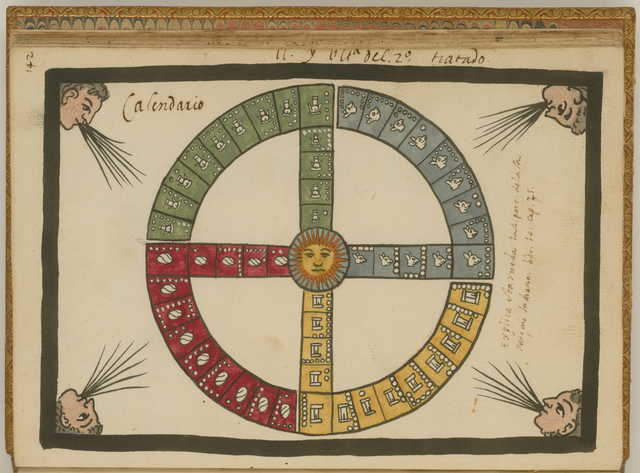
The Aztec Tonalpohualli Calendar, 1585, attributed to the 16th-century Mexican Jesuit Juan de Tovar. Image: Wikimedia Commons
Meet the Grantees
Since 2005, the Wyeth Foundation for American Art has supported the publication of books on American art through the Wyeth Foundation for American Art Publication Grant, administered by CAA. The 2019 grantees are:
- Lucy Bradnock, No More Masterpieces: Modern Art After Artaud, Yale University Press
- Elizabeth Ferrer, Critical Lens: A History of Latinx Photography, University of Washington Press
- Kimberly Beil, Good Pictures: A History of Popular Photography, Stanford University Press
- Elizabeth Boone, Descendants of Aztec Pictography: The Cultural Encyclopedias of Sixteenth Century Mexico, The University of Texas Press
Read a list of all recipients of the Wyeth Foundation for American Art Publication Grant from 2005 to the present.
BACKGROUND
For the Wyeth Foundation for American Art Publication Grant, “American art” is defined as art created in the United States, Canada, and Mexico. Eligible for the grant are book-length scholarly manuscripts in the history of American art, visual studies, and related subjects that have been accepted by a publisher on their merits but cannot be published in the most desirable form without a subsidy. The deadline for the receipt of applications is September 15 of each year.
Guidelines
Process, Materials, and Checklist
CONTACT
Questions? Please contact Cali Buckley, Grants and Special Programs Manager, at cbuckley@collegeart.org.
Meet the 2020 CAA-Getty International Program Participants
posted by CAA — Nov 14, 2019
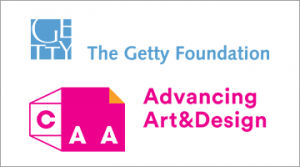
We’re pleased to announce this year’s participants in the CAA-Getty International Program. Now in its ninth year, this international program supported by the Getty Foundation will bring fifteen new participants and five alumni to the 2020 Annual Conference in Chicago, Illinois.
The participants—professors of art history, curators, and artists who teach art history—hail from countries throughout the world, expanding CAA’s growing international membership and contributing to an increasingly diverse community of scholars and ideas. This year we are adding participants from four countries not included previously—Bolivia, Saudi Arabia, Côte d’Ivoire, and Singapore—bringing the total number of countries represented by the program to fifty. Selected by a jury of CAA members from a highly competitive group of applicants, the participants will receive funding for travel expenses, hotel accommodations, conference registration, CAA membership, and per diems for out-of-pocket expenditures.
At a one-day preconference colloquium, to be held this year at the School of the Art Institute of Chicago, the fifteen new participants will discuss key issues in the international study of art history together with five CAA-Getty alumni and several CAA members from the United States, who also will serve as hosts throughout the conference. The preconference program will delve deeper into subjects discussed during last year’s program, including such topics as postcolonial and Eurocentric legacies, interdisciplinary and transnational methodologies, and the intersection of politics and art history.
This is the third year that the program includes five alumni, who provide an intellectual link between previous convenings of the international program and this year’s events. They also serve as liaisons between CAA and the growing community of CAA-Getty alumni. In addition to serving as moderators for the preconference colloquium, the five alumni will present a new Global Conversation during the 2020 conference titled Things Aren’t Always as they Seem: Art History and the Politics of Vision.
The goal of the CAA-Getty International Program is to increase international participation in the organization’s activities, thereby expanding international networks and the exchange of ideas both during and after the conference. CAA currently includes members from sixty countries around the world. We look forward to welcoming the following participants at the next Annual Conference in Chicago.
2020 Participants in the CAA-Getty International Program
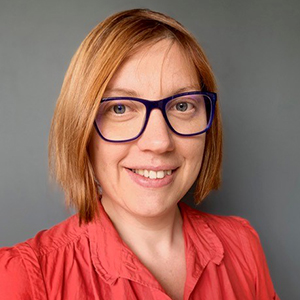
Irene Bronner is a senior lecturer with the South African Research Chair in South African Art History and Visual Culture, Faculty of Art, Design and Architecture, University of Johannesburg, South Africa. Her doctorate (DLitt et Phil), titled “Representations of Domestic Workers in Post-apartheid South African Art Practice,” was conferred by the University of Johannesburg in 2016. She then held a three-year postdoctoral research fellowship with the same institution, during which time she received a Postdoctoral Research Fellows’ Excellence Award. Her research interests center on feminist studies in the visual arts, with a focus on contemporary southern Africa. She works principally with feminist, queer and postcolonial cultural theory as well as issues of memory, affect, gender, and the aftermath of trauma. She has published in local and international journals, recently in Woman’s Art Journal and Textile: Journal of Cloth and Culture.
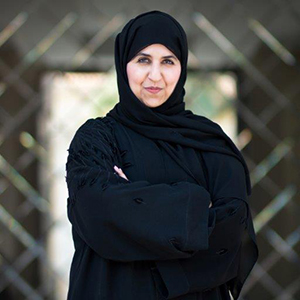
Eiman Elgibreen is an artist and an assistant professor of art history at the Princess Nourah bint Abdulrahman University in Riyadh, Saudi Arabia. She obtained a PhD in art history from the University of Sussex (UK) for her research on “Image Making: Representations of Women in the Art and Career of Safeya Binzagr 1968-2000.” Since 2011 Elgibreen has also been a freelance writer for Al-Riyadh Daily Newspaper and Al-Jazirah Daily Newspaper, and an art consultant for organizations that are concerned with preserving the legacy of Saudi pioneer artists such as Darat Safeya Binzagr (a museum devoted to the artist’s work), and Saudi Arts House (a family foundation devoted to the work of Mohammed Alsaleem). In addition, she has curated a number of art exhibitions, including the Saudi National Pavilion at the 58th Venice Biennale, 2019. Elgibreen is interested in exploring the forgotten and/or misrepresented aspects of Saudi and Arab culture through her research and her art. A goal of her work is to encourage acceptance of cultural differences.
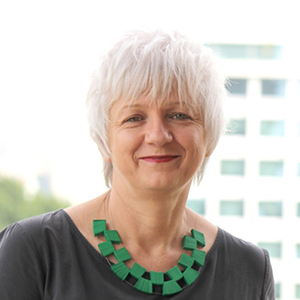
Dária G. Jaremtchuk is an associate professor of art history at the Universidade de São Paulo, Brazil, where she teaches undergraduate and graduate courses on contemporary art. As Fulbright Brazil Distinguished Chair at Emory University in 2019, she taught a course in the art history department about Brazilian contemporary visual arts. In 2018, she was a visiting scholar at Georgetown University and at Brown University in 2011. In 2010, she edited the book Arte e política: situações (Art and politics: situations) (Alameda Editora) and in 2007 she published Anna Bella Geiger: Passagens Conceituais (Anna Bella Geiger: conceptual passages) (C/Arte and Editora da Universidade de São Paulo). She is currently researching the relocation of Brazilian artists during the Brazilian military dictatorship of the 1960s and 70s and the artistic exchange between Brazil and the United States at that time. She has published on this topic in journals, conference proceedings, and book chapters.
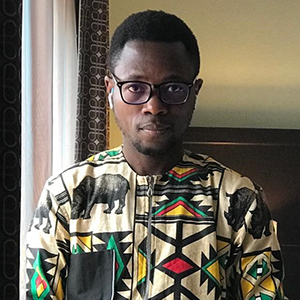
Ganiyu Jimoh received a PhD in art history from the University of Lagos, Nigeria, where he is also a lecturer. He is currently a postdoctoral fellow with the Arts of Africa and Global Souths research program in the Department of Fine Art at Rhodes University in South Africa. His research, which focuses on contemporary art, new media, satire, and cartoons has attracted major awards, including the prestigious University of Lagos Best Researcher Award in Arts and Humanities in 2011. In 2015 he received a grant to conduct research for his PhD dissertation at the African Studies Center at Michigan State University. Jimoh is also a recipient of the 2019 African Studies Association Presidential fellowship. As a scholarly writer who is also a practicing political cartoonist, Jimga (his cartoon signature) has several local and international exhibitions to his credit and currently serves as the secretary of Cartoonists Association of Nigeria (CARTAN).
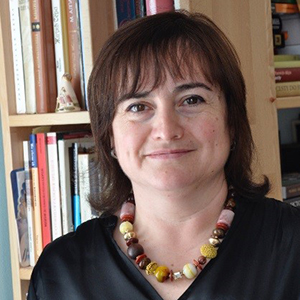
Mariana Levytska is a research associate in the Department of Art Studies of the Ethnology Institute at the National Academy of Sciences of Ukraine in Lviv. She received a PhD in the history of art from the Lviv National Academy of Arts in 2003. Based on her thesis, she published a monograph about Ukrainian portrait painting as an artistic and memorial phenomenon of the long nineteenth century. In addition, she has worked as a senior lecturer from 2005–14 and associate professor in 2015 at the Department of Architectural Environment Design in the Faculty of Architecture of the Lviv National Agricultural University. Levytska’s current area of research is Ukrainian religious art of the eighteenth century (late Baroque-Rococo period), focusing on the concept of cultural transfer according to “peripatetic works of art (such as engravings and albums)” as well as peripatetic artists. She is also interested in issues of Ukrainian historiography of the art of the twentieth century.
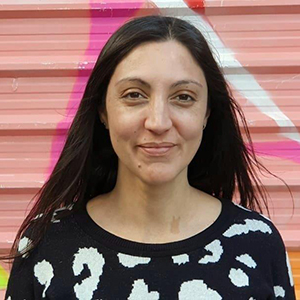
Daniela Lucena holds a PhD in social sciences from the University of Buenos Aires (UBA) and specialize in the sociology of art and culture. A researcher at the National Scientific and Technical Research Council (CONICET) in Buenos Aires, she teaches sociology of art courses at UBA, where she is also head of a research team. Since 2003 she has studied various aesthetical projects where art, culture, and politics are intertwined. Her books include Contaminación artística. Arte concreto, comunismo y peronismo en los años 40 (Artistic contamination: concret avant-garde, communism and Peronism in the 40s) (Biblios, 2015) and Modo mata moda. Arte, cuerpo y (micro)política en los 80 (Form kills fashion: art, body and [micro]politics in the 80s), coauthored with Gisela Laboureau, (EDULP, 2016). In addition to her work as researcher, since 2007 she has collaborated with PH15, a foundation that organizes photography workshops for children of vulnerable populations, assessing programs and community work linked to art.
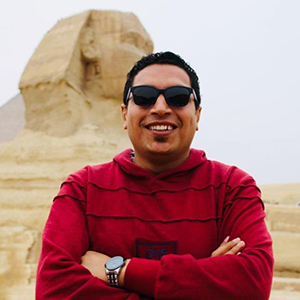
Ali Mahfouz is the director of the Mansoura Storage Museum, part of the Ministry of Egyptian Antiquities. He received a BA in 2010 and an MA in Egyptology in 2017, both from Mansoura University. He is currently working on his PhD. Mahfouz began working as an inspector of antiquities at the Ministry of Antiquities in 2012. In August 2015 he was appointed the supervisor of the Mansoura Storage Museum and in October 2018 he became its director. With colleagues, Mahfouz founded Save Mansoura, a volunteer organization dedicated to raising public awareness about the value of cultural heritage and the restoration of historic sites. He is also the cofounder of the Documentation of Architectural and Urban Heritage of Mansoura City Project, which aims to document, digitize, and archive that city’s cultural history. His greatest concern is the fate of archaeological sites damaged or destroyed because of political conflicts and the need to preserve his country’s cultural heritage in the wake of that destruction.

Priya Maholay-Jaradi is the founding convenor of a new art history academic program, a collaboration between the National University of Singapore (NUS) and the National Gallery Singapore. She earned an MA in art history from the School of Oriental and African Studies, London (2001); a PhD from NUS (2012), and a postdoctoral fellowship at the International Institute for Asian Studies, Leiden (2013). A former curator at the Asian Civilizations Museum, Singapore, she has curated Portrait of a Community (National Gallery of Modern Art, Mumbai, 2002), Beauty in Asia (Asian Civilizations Museum, Singapore, 2007) and Tautology of Memory (NUS Museum, Singapore, 2012). Jaradi’s monograph, Fashioning a National Art: Baroda’s Royal Collection and Institutions (1875-1924) (Oxford University Press, 2016), mobilizes provincial archives to reveal links between princely modernities and nationalisms in South Asia. She is the volume editor of Baroda: A Cosmopolitan Provenance in Transition (Marg Foundation, 2015). Her current research examines India-Singapore museological imaginations within the context of cold war diplomacy, the Non-Aligned Movement, and decolonization.
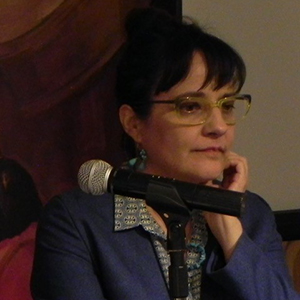
Valeria Paz Moscoso specializes in modern and contemporary Bolivian art history. She is the academic coordinator and advisor in the Department of Culture at the Universidad Católica Boliviana (La Paz), where she is also a temporary lecturer and editor of the journal Ciencia y Cultura (Science and culture). Her PhD dissertation examined the concept of repression and emancipation in the work of Bolivian artist Roberto Valcárcel. Currently, she is researching the disruption of the narrative of Indigenism in contemporary art. Additional research interests include gender, humor, critical theory, postcolonial studies, and arts-based research. She has curated exhibitions in Bolivia and the United Kingdom, and published in journals such as ESCALA Research Papers, Ciencia y Cultura, Bisagra (Hinge), Terremoto (Earthquake), and in the books Corrosión y Anomalía: escenas del arte contemporáneo boliviano (Corrosion and anomaly: scenes from contemporary Bolivian art) (2019) and Bolivia: Los caminos de la escultura (Bolivia: the paths of sculpture) (2009), a publication selected for the Bicentennial Library of Bolivia.
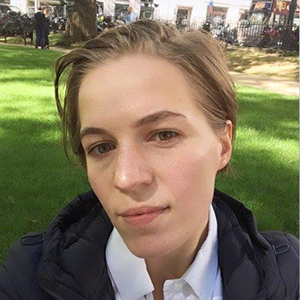
Daria Panaiotti is a photography curator and research associate in the Contemporary Art Department of the State Hermitage Museum, St. Petersburg, Russia. She graduated with honors from the European University in St. Petersburg (EUSPB), where she is currently completing her PhD with a dissertation on the history of Soviet documentary photography in Brezhnev’s era. She is also a member of the program committee of the After Post-Photography international conference, the only annual conference on photographic theory and history in Russia. Previously she was involved in the project In Support of Photography in Russia, funded by the IRIS Foundation, Moscow, where she was a member of the curatorial team that organized exhibitions of Russian photography for FotoFest 2012—an international photography festival held every two years in Houston, Texas—and where she also participated in an international portfolio review for Russian photographers at the Garage Center for Contemporary Culture in Moscow in 2011.
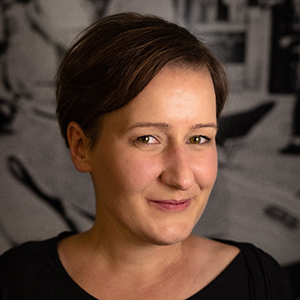
Aleksandra Paradowska is a lecturer and researcher in the Department of Art History and Philosophy, Faculty of Art Education and Curatorial Studies, at the University of Fine Arts in Poznań, Poland. After receiving a PhD from the Adam Mickiewicz University in Poznań in 2013, she was a postdoctoral fellow at the University of Wrocław from 2014–17. Her research focuses on architectural history of the nineteenth and twentieth centuries, especially the relationship between architecture and politics. For the past five years she has studied Nazi architecture in Polish territories during the Second World War in relation to different perspectives of the humanities, that is, interdisciplinary views of postcolonial and heritage studies. Paradowska has published widely on Polish interwar architecture and received several scholarships: from DAAD (Deutscher Akademischer Austauschdienst) in 2010, START by the Foundation for Polish Science in 2014, and a scholarship for leading young researchers in Poland by the Ministry of Science and Higher Education in 2017–19.
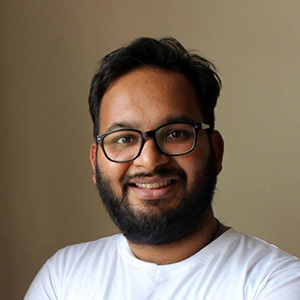
Saurabh Tewari received a BArch in 2008 from the Sushant School of Art and Architecture, Gurgaon/GGSIP University, Delhi (India), and a MDes in 2010 from the Industrial Design Center, Indian Institute of Technology Bombay. As a doctoral candidate in the Design Program at the Indian Institute of Technology Kanpur, he is attempting to map out and understand the shifting role of design in postcolonial India within the broader narrative of national development. Currently an assistant professor of design in the School of Planning and Architecture in Bhopal, Tewari has developed a curriculum that includes design history, design culture, and design studies. Ultimately, his goal is to develop South Asia’s first postgraduate program in design history and studies. He views his role in two ways: as a design historian in South Asia exploring and constructing scholarly approaches to design history, and as a South Asian scholar in the design history community voicing the potential of decolonized approaches to the field.
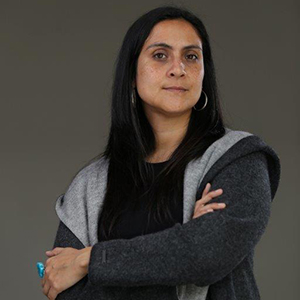
Giuliana Vidarte received a BA in Latin American literature and an MA in art history from the Pontificia Universidad Católica del Perú. In 2013 she was part of a curatorial intensive course in Northern Ireland organized by Independent Curators International (New York). In 2014 she received a travel grant to participate in the annual meeting of the International Committee for Museums and Collections of Modern Art (CIMAM) in Qatar. Between 2015–18, she was the curator of Bufeo: Amazonía+Arte, a project for the research and dissemination of Amazonian art. Vidarte has developed exhibition projects about the relationship between visual arts and literature, the rewriting of history based on the recovery of unofficial discourses, and artistic production in the Peruvian Amazon. Currently, she is chief curator and head of exhibitions at the Museo de Arte Contemporáneo in Lima (MAC Lima) and curatorial assistant for the Peruvian pavilion at the 58th Venice Biennale in 2019.
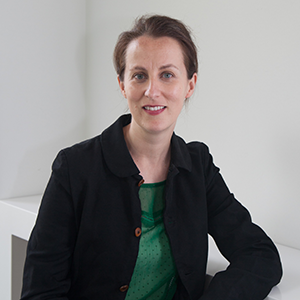
Julia Waite is the curator of New Zealand art at the Auckland Art Gallery Toi o Tāmaki, New Zealand’s largest art museum. She has worked on a number of large-scale exhibitions including the fifth Auckland triennial, If you were to live here . . . (2013) and Space to Dream: Recent Art from South America (2016). Her research interests are focused on the development of modern art in New Zealand and its connections with other peripheral modernisms. In 2015 she curated the exhibition Freedom and Structure: Cubism and New Zealand Art 1930–1960, which toured throughout New Zealand, and published an associated catalogue. She cocurated the major survey of New Zealand’s preeminent abstract painter Gordon Walters: New Vision, which opened at Auckland Art Gallery in 2018. Most recently, Waite has cocurated Louise Henderson: From Life, the first comprehensive retrospective of French-born New Zealand artist Louise Henderson. She has an MA in art history (First Class) and an MA in museum and heritage studies.
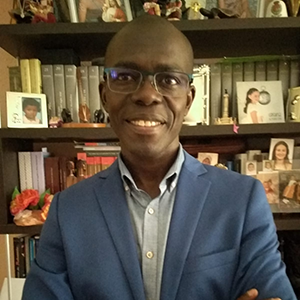
Jean-Arsène Yao received a PhD in Latin American history from the Universidad de Alcalá (Spain) in 2002. His scholarship focuses on teaching Spanish in the African Diaspora, particularly with blacks in Argentina. Currently professor of Latin America and Caribbean studies at the Université Félix Houphouët-Boigny (Côte d’Ivoire) and visiting professor at the Universidad de Alcalá and the Universidad de Granada (Spain), his teaching interests include Hispanic American culture and civilization; race, class, and ethnicity in Latin America; and Afro-Hispanic history. He has a special interest in the visual representation of people of African descent in art history and visual studies. Yao has conducted research in Argentina, Colombia, Cuba, Ecuador, and Uruguay. He has published widely, including five books, several book chapters, and over twenty articles in juried journals of research. Since 2016 he has been the founder-coordinator of the Group of Latin American Studies and Research (https://grelat-ufhb.org/).
Participating Alumni
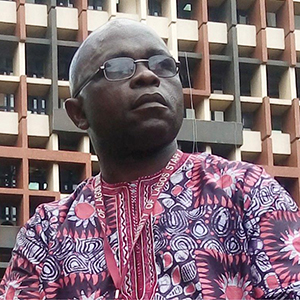
Abiodun Akande is a senior lecturer at the University of Lagos, Nigeria, where he teaches painting, art education, and art history. Akande earned a BA in fine arts from the Obafemi Awolowo University and received an MA and PhD in the visual arts of Africa from the Institute of African Studies, University of Ibadan, Nigeria. In 2013, he participated in the first Basel Summer School in African Studies at the University of Basel in Switzerland; he also attended a graduate symposium hosted by the School of Arts at Peking University in Beijing, China. Akande first participated in the CAA-Getty International Program in 2016 and returned the following year to participate in the 2017 CAA-Getty reunion program. His current research focuses on knowledge systems in the art and cultural practices of indigenous communities in Nigeria. A recent publication, “Ará òrun kìn-ìn kin-in: Òyó-Yòrùbá egúngún Masquerade in Communion and Maintenance of Ontological Balance,” (Genealogy, 3(1), 7, 2019) explores the Yòrùbá belief in life after death, and how the powers and spirits of the deceased are harnessed for the benefit of the living.
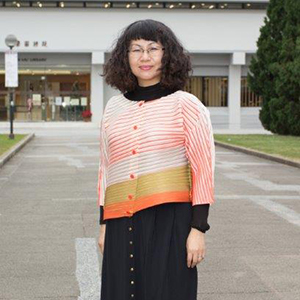
Pedith Chan is an assistant professor of Cultural Management in the Faculty of Arts at the Chinese University of Hong Kong. She received her PhD in Art and Archaeology from SOAS, University of London. Before joining the Chinese University of Hong Kong Chan was an assistant curator at the Hong Kong Museum of Art, and an assistant professor at the City University of Hong Kong. Her research interests focus on the production and consumption of art and cultural heritage in modern and contemporary China. Recent publications include The Making of a Modern Art World: Institutionalization and Legitimization of Guohua in Republican Shanghai (Leiden: Brill, 2017), “Representation of Chinese Civilization: Exhibiting Chinese Art in Republican China,” in The Future of Museum and Gallery Design (London: Routledge, 2018), and “In Search of the Southeast: Tourism, Nationalism, Scenic Landscape in Republican China,” (Twentieth-Century China, 2018). She is currently researching the making of scenic sites in modern China. Chan was a participant in the 2019 CAA-Getty International Program.
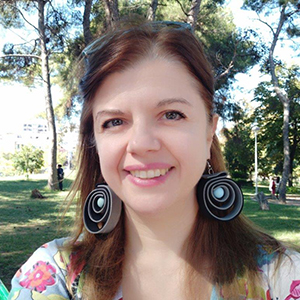
Iro Katsaridou has been the curator of modern and contemporary art at the Museum of Byzantine Culture in Thessaloniki, Greece since 2005. She studied art history at the Aristotle University of Thessaloniki and the Université Paris I-Sorbonne, and also pursued museum studies at the City University of New York. Her doctoral dissertation focused on contemporary Greek photography (Aristotle University, 2010). For the past six years Katsaridou has been researching photography and art in World War I and II, during which time she has curated exhibitions on the subject and edited related catalogues. For the last four years she has been teaching as an adjunct faculty member at several Greek universities. She has co-edited two books about photography during the Nazi Occupation of Greece (1941-1944) and written articles and book chapters on photography, exhibition display policies, as well as the relationship between contemporary Greek art and politics. In 2019, she participated in the CAA-Getty International Program.
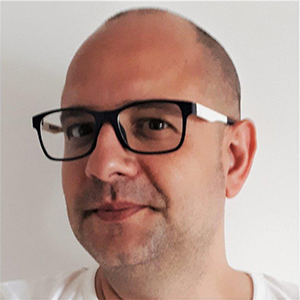
Cristian Nae is an associate professor at the George Enescu National University of Arts in Iași, Romania, where he teaches courses on contemporary art history, critical theory, visual and exhibition studies. He has benefited from scholarships and research grants from the Erste Foundation (Vienna), National Research Council, Romania (CNCS-UEFISCDI) , the CAA-Getty International Program, the Getty Foundation (Los Angeles), and New Europe College (Bucharest). His latest studies have appeared in collective volumes published by Wiley-Blackwell (2019, forthcoming) and Routledge (2018). Nae is the co-editor of Rethinking the Image of the World: Projects and Sketches. Contemporary Romanian Art 2010-2020 (Hatje Cantz, 2019, forthcoming). As a curator, he is the co-organizer of the exhibition Rethinking the Image of the World: Projects and Sketches (Musée Mill, La Louvrière, Belgium, 2019), which was part of the Europalia Arts Festival. Nae also curated Unfinished Conversations on the Weight of Absence, the exhibition marking Romania’s participation in the 58th Venice Biennale (2019). Nae participated in the first year of the CAA-Getty International Program, in 2012.
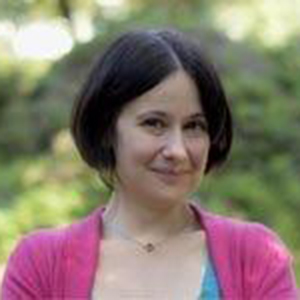
Nóra Veszprémi is a research associate for the European Research Council-funded project Continuity/Rupture: Art and Architecture in Central Europe 1918–1939 (CRAACE) at Masaryk University, Brno (Czech Republic). She is also an honorary research fellow at the University of Birmingham (UK), where she recently completed a project on museums in Austria-Hungary between 1867 and 1918. In 2014–15 she taught at the Institute of Art History at Eötvös Loránd University, Budapest (Hungary), where she also received her PhD in 2013. Veszprémi specializes in nineteenth- and early-twentieth-century Central European art. A former curator at the Hungarian National Gallery, she is the author of a monograph on romanticism and popular taste in mid-nineteenth century Hungary (in Hungarian) and co-author (with Matthew Rampley and Markian Prokopovych) of two forthcoming volumes on museums in Austria-Hungary: An Empire on Display: The Art Galleries and Museums of Austria-Hungary (Penn State University Press, 2020); and Liberalism, Nationalism and Design Reform in the Habsburg Empire: Museums of Design, Industry and the Applied Arts (Routledge, 2020). She is currently working on a monograph about historical memory in Central Europe after the collapse of the Habsburg Empire. Veszprémi was a 2015 participant in the CAA-Getty International Program.
Art Journal / Art Journal Open (AJO) Editorial Board Seeks New Members
posted by CAA — Nov 11, 2019
CAA invites nominations and self-nominations for two individuals to serve on the Art Journal / AJO Editorial Board for a three-and-one-half-year term: January 1, 2020–June 30, 2023 Candidates may be artists, art historians, art critics, art educators, curators, or other art professionals; institutional affiliation is not required. Art Journal, published quarterly by CAA, is devoted to twentieth- and twenty-first-century art and visual culture. AJO is an online forum for the visual arts that presents artists’ projects, conversations and interviews, scholarly essays, and other forms of original content. Committed to fostering new intellectual exchanges in the fields of modern and contemporary art, AJO prioritizes material that makes meaningful use of the web and publishes on a rolling basis.
The editorial board advises the Art Journal and AJO editors-in-chief and assists them in seeking authors, articles, artists’ projects, and other content for the journal; performs peer review and recommends peer reviewers; guides the journals’ editorial programs and may propose new initiatives for them; promotes and advocates for both journals; and may support fundraising efforts on their behalf. Members also assist the editors-in-chief to keep abreast of trends and issues in the field by attending and reporting on sessions at the CAA Annual Conference and other academic conferences, symposia, exhibitions, and events.
The Art Journal / AJO Editorial Board meets three times a year, with meetings in the spring and fall plus one at the CAA Annual Conference in February. The fall and spring meetings are currently held by teleconference. Members are expected to pay travel and lodging expenses to attend the conference in February. Members of all editorial boards volunteer their services to CAA without compensation.
Candidates must be current CAA members in good standing and should not be serving on the editorial board of a competitive journal or on another CAA editorial board or committee. Members may not publish their own work in the journals during the term of service. CAA encourages applications from colleagues who will contribute to the diversity of perspectives on the Art Journal / AJO Editorial Board and who will engage actively with conversations about the discipline’s engagements with differences of culture, religion, nationality, race, gender, sexuality, and access. Nominators should ascertain their nominee’s willingness to serve before submitting a name; self-nominations are also welcome. Please send a letter describing your or your nominee’s interest in and qualifications for appointment, a CV, and your contact information to Joan Strasbaugh, Managing Editor, at JStrasbaugh@collegeart.org or c/o CAA, 50 Broadway, 21st floor, New York, NY 10004.
Deadline: Sunday, December 8, 2019
Affiliated Society News for November 2019
posted by CAA — Nov 07, 2019
Affiliated Society News shares the new and exciting things CAA’s affiliated organizations are working on including activities, awards, publications, conferences, and exhibitions.
Interested in becoming an Affiliated Society? Learn more here.
Mid-America College Art Association
The Mid-America College Art Association is seeking to add a board member position to assist with financial aspects of the organization. The Association is an all-volunteer, national organization in the process of shaping a five-year plan (and beyond!) The Board meets once per month via ZOOM online meetings. If interested, please contact: Heather Hertel at heather.hertel@sru.edu.
American Society of Appraisers
Introduction to the Chinese Art Market, Challenges and Opportunities
Wednesday, February 5, 2019 | Webinar| 1:00pm – 3:00pm ET | $79 members; $119 non-members
In the past 20 years, the Chinese art market has grown dramatically, tracking the expansion of the Chinese economy, which is now the world’s second largest. This webinar will provide an overview of the socio-economic forces behind its dramatic growth and headline making prices at auction, and the challenges of appraising and advising on Chinese art. According to Artprice, since 2006, China has consistently been in the top three global art markets and is the largest in Asia. Some sectors are booming with prices often wildly exceeding auction high estimates, while others have stayed the same or declined. Drawing on more than twenty-five years in the field of Chinese art as an art historian, educator and appraiser, the presenter will address the following: the factors behind the growth of certain sectors, the role of mainland Chinese collectors and Chinese auction houses in driving the market, why the IRS will not accept realized sales from Chinese auction houses, the industry of fakes and forgeries of Chinese painting, sculpture, ceramics among other works of art and its impact on the market.
To see more upcoming ASA webinars and classes, click here.
William Morris Society in the United States
The William Morris Society in the United States is sponsoring two sessions at the Modern Language Association convention in Seattle on January 11 and 12, 2020.
Our first session, “Re-evaluating the Pre-Raphaelites,” examines how recent exhibitions have reassessed Pre-Raphaelite art and design, from William Holman Hunt and the Pre-Raphaelite Vision at the Manchester Art Gallery in 2009 to the traveling exhibition Victorian Radicals: From the Pre-Raphaelites to the Arts and Crafts Movement at venues through 2021. These displays have positioned the intersection of art, design, and literature as defining features of the Pre-Raphaelites and the Arts and Crafts movement, marking them as both “avant-garde” and deeply engaged with the past.
Our second session, “Ecosocialism and the Late Victorians,” is co-sponsored with the Association for the Study of Literature and Environment and addresses how the late nineteenth century saw artists and writers, including Morris, plant the seeds of ecological concerns in socialist politics, leading to innovative approaches to both environmental and socialist ideas.
Interested attendees who are not members of MLA may obtain guest passes by contacting kellyann.fitzpatrick@gmail.com
For paper abstracts, panelists, and scheduling information, see http://www.morrissociety.org/MLA2020sessions.pdf
Society of Architectural Historians
The Society of Architectural Historians (SAH) and University of Virginia Press are pleased to announce a new open-access, mobile-friendly edition of SAH Archipedia, an authoritative online encyclopedia of the built environment of the United States developed by SAH and Rotunda, the Press’s digital imprint, with lead funding from the National Endowment for the Humanities: sah-archipedia.org. The newly redesigned SAH Archipedia brings peer-reviewed scholarship to a worldwide audience of researchers, students, teachers, preservation advocates, cultural tourists and others interested in learning more about the architectural history of the U.S.
SAH will offer 36 paper sessions at its 2021 Annual International Conference in Montréal, Québec, Canada. The Society invites individuals and those representing SAH chapters and partner organizations to submit a session proposal for the Montréal conference. SAH membership is required to chair or present research at the annual conference; non-members who are selected to chair a session will be required to join SAH in August 2020. Session proposals covering every time period and all aspects of the built environment, including landscape and urban history, are encouraged. Session proposals are due January 14, 2020.
In a joint program with the Athenaeum of Philadelphia, SAH is pleased to offer the Charles E. Peterson Fellowship that will support the participation of a graduate student in the research and writing for a volume in the Buildings of the United States (BUS) series and/or SAH Archipedia. The recipient will research some aspect of American architecture prior to 1860, which they may choose from a list of topics provided by authors of forthcoming BUS books. The fellowship is intended for students currently enrolled in graduate programs in art or architectural history, architectural design, urban planning, historic preservation, landscape architecture, American studies, or related disciplines. The application deadline is January 6, 2020.
Historians of Islamic Art Association
CFP: Regime Change
University of Michigan
Ann Arbor
10.29–11.01.20
The aim of this conference is to focus on moments of “regime change” in Islamic art history and to also direct attention to “regimes” that structure our own field, raising questions of interpretation and method. We invite new research focusing on art and architecture after clear political ruptures (e.g., invasion, occupation, conversion); on the replacement of one symbolic order with another (e.g., public inscriptions in the urban space, changes in sartorial codes, new gender norms); and on the transfer of resources (e.g., artists, objects, libraries, treasuries) from one power to another. We also invite panels and papers that explore the potentials and pitfalls of new interpretive and methodological approaches to core questions about objects, material, and images, in both the academy and the museum.
Call for Papers
The submission deadline for pre-organized panels and single papers is December 1, 2019. For single papers, please submit as a single attachment a one-page CV and a paper abstract of no more than 250 words. For pre-organized panels (three or four papers), please submit as a single attachment one-page CVs for all speakers, and the panel abstract and individual abstracts, each no more than 250 words.
Please submit panels and papers to Christiane Gruber, Organizer (cjgruber@umich.edu). All other queries may be directed to Bihter Esener, Managing Organizer (besener@umich.edu).
Accepted speakers must be HIAA members in good standing by the time of the symposium. Speakers will have their travel expenses and accommodation covered by the University of Michigan and HIAA.
The 2020 HIAA Symposium Committee:
Christiane Gruber, organizer
Anneka Lenssen, Michael Chagnon, and Alain George, committee members
ACASA
ACASA Triennial 2020 Program Preview
ACASA 18th Triennial Symposium on African Art, June 17 – 21, 2020
The ACASA 18th Triennial Symposium on African Art will take place at DePaul University and the Art Institute of Chicago, June 17-21, 2020. This is the preliminary program:
Tuesday, June 16
Conference Registration, DePaul University Center
Wednesday, June 17
Museum Day and Reception, the Art Institute of Chicago. Separate registration required
Thursday-Sunday, June 18-21, 8am-5pm
Conference Panels, DePaul University Center
Thursday evening, June 18
Evening Reception at the Block Museum, Northwestern University
Friday evening, June 19
Awards Ceremony and Keynote Lecture by Koyo Kouoh, Executive Director and Chief Curator of Zeitz MOCA, the Art Institute of Chicago
Saturday, June 20, 5-9pm
Dinner and Dance Party, DePaul Student Center
For more and detailed information and registration, see:
ACASA website
Women’s Caucus for Art
Women’s Caucus for Art 2020 conference has a theme of Intersectionality
This conference, centered at Columbia College and concurrent with CAA, includes a wide range of panels and workshops.
The WCA 2020 President’s Award for Art and Activism will be given to Rose B. Simpson, a mixed-media artist, whose work addresses the emotional and existential impacts of living in the 21st century, an apocalyptic time for many analogue cultures. Her figures are often powerful matriarchs or elusively androgynous empaths who channel the spirits of high art, hiphop, lowrider attitudes, and long-lost ancestors of all kinds. Simpson’s work will also be discussed by Alicia Harris in the CAA panel on Inappropriate Bodies: Art, Design, and Maternity.
WCA has a new LGBTQIA+ Committee. Those interested in joining should contact the chair, Emily Getsay: getsay.emily@gmail.com
There are two national juried exhibitions on view during the conference, February 12-16: “Collectively Shifting,” Cecilia Vargas, juror, at Bridgeport Art Center and “Intersectional History,” Donna M. Weeks, juror at Woman Made Gallery.
American Institute for Conservation
We’re looking forward to our 2020 Annual Meeting in Salt Lake City! The theme is “Conservation – Reactive and Proactive.” Registration is now open! The full program schedule will be available shortly, so please continue to check our site for updated information.
Conservators play a vital role in protecting and preserving the objects and places that tell the story of our lives, history, and society. Become a Friend of Conservation and make sure our past has a future.
If you are interested in learning more about conservation and supporting the essential work performed by conservators, or want exclusive insights into conservation, including tips on preserving personal collections, learn about the benefits of being a Friend: www.culturalheritage.org/friends.
Historians of German, Scandinavian, and Central European Art and Architecture (HGSCEA)
HGSCEA is now accepting submissions for the Society’s 8th Annual Emerging Scholars Essay Prize, an award of $500 given annually to the author of a distinguished article or essay published the preceding year on any topic in the history of German, Scandinavian, or Central European art, architecture, design, or visual culture. Submissions, which must be in English and may be from electronic or print publications, must have a publication date of 2019. Applicants must be either current Ph.D. students or have earned a Ph.D. in or after 2015, and must be members of HGSCEAat the time of application. The deadline for submissions is 16 December 2019.
The Board is also seeking nominations and self-nominations for election to the HGSCEA Board for a three-year term to begin February 2020. Candidates for four at-large Board Members as well as for four Board Officers are all welcome. Each of HGSCEA’s three areas – Germany, Scandinavia, and Central Europe – should have at least one representative on the Board and candidates from all three of these areas are currently sought. Any member of HGSCEA in good standing may seek election to the Board. The deadline for nominations is 25 November 2019.
For more information on how to join HGSCEA, on the responsibilities of Board members, and how to submit materials either for the publication prize or for the election, please go to the HGSCEA website: http://hgscea.org/
Renaissance Society of America
RSA Travel, Diversity, and On-Site Care Grants
The Renaissance Society of America will hold its Annual Meeting in Philadelphia April 2-4, 2020. RSA members are invited to apply for travel, diversity, and on-site care grants. Each grant has a separate application with different requirements. Applications for conference grants are now live and can be found here. The deadline for all grant applications is December 3, 2019. Haven’t registered for the conference yet? Here is the link.
Day of Digital Learning
The RSA is pleased to offer a Day of Digital Learning on Sunday, 5 April 2020, the day after our Annual Meeting in Philadelphia (April 2-4, 2020). A tentative course list is now available to view. Signup will begin in January.
Innovative Teaching Grant Winners Announced
The RSA is pleased to announce our Grants in Support of Innovative Teaching of Renaissance Studies to High School Students will fund two projects this year. One examines the historiography of Spanish Arizona and the other highlights an inclusive Shakespeare curriculum. RSA President Clare Carroll announces our winners.
Renaissance Quarterly Open Access
The Editors of Renaissance Quarterly are pleased to provide complimentary access to two collections of articles from the journal, one relating to Islam and the Middle East and the other on The Americas.
SOCIETY OF HISTORIANS OF EASTERN EUROPEAN, EURASIAN, AND RUSSIAN ART AND ARCHITECTURE (SHERA)
The Board of the Society of Historians of Eastern European, Eurasian, and Russian Art and Architecture (SHERA) is pleased to announce that Anna (Ania) Paluch of Carleton University has been awarded the SHERA Graduate Student or Independent Scholar Travel Grant to attend and present at the 108th CAA Annual Conference in 2020. She will be delivering a paper entitled “From Turtle Island to Vistula’s Shores: Indigenous and Slavic Futurisms in Dialogue” as part of the panel “The Present of the Future: Indigenous Futurisms in the Visual Arts” (Saturday, February 15, 2:00 – 3:30 PM in Continental B, Lobby Level). Paluch examines “the use of oral stories, memories, history, and cultural survivance within pop culture, contact zones, Native and Slavic Slipstreams and oral stories/legends as sci-fi (SF) narratives within Indigenous Futurism and Slavic Futurism, and how these genres are connected through those concepts.”
The SHERA-sponsored panel “Freezes and Thaws in the Socialist Bloc” will be held on Saturday, 4:00 – 5:30 PM in the Astoria Room (3rd Floor). This session will consider art from the former Soviet Bloc and beyond that tried to recuperate, revivify, or re-engage cultural formations that had previously been rejected or suppressed. Papers include: “A Classic(al) Russian Freeze: Timur Novikov and the New Academy of Fine Arts” (Liana Battsaligova, Yale University); “Jugoslovenka and her Discontents: Feminist Resistance During Yugoslav Socialism & After” (Jasmina Tumbas, University at Buffalo); and, “Neo-avantgarde on repeat: Polish contemporary artists revisit the 1970s” (Magdalena Moskalewicz, School of the Art Institute of Chicago).
Association of Greek Art Historians (EEIT)
The 6th National Conference the Association of Greek Art Historians (EEIT) will be held November 22 through 24, 2019 at the Amphitheater of the Benaki Museum, 138 Pireos Street, Athens, Greece. Thirty eight papers will respond to the conference’s theme, “Periods of Crisis and Paradigm Shifts,” and will address the following topics: canonical narratives and their relative ‘paradigms’; paradigm shifts and epistemological ruptures; interdisciplinary approaches, technoscience and the crisis of humanist studies; and global art history, interculturality and art geographies. A keynote address by Mechthild Fend, professor of history of art, University College London, will investigate the theme of medical pathology in relation to the crises of the French Revolution.
More information is available at: https://eeit.org/news/6th-conference-of-history-of-art/?lang=en
Association of Art Museum Curators
Know a curator who is creating groundbreaking new work?
Nominate them for Association of Art Museum Curators’ Awards for Excellence, the annual prize dedicated to recognizing both affiliated and independent curators whose work offers new methodologies, considers the public’s understanding, and advances the field. Since their launch in 2004, nearly 200 curators have received an award from AAMC. Click here to view past Awards for Excellence recipients.
Only affiliated and independent curator(s) working in the nonprofit sector can receive an award. All nominations must be submitted by AAMC members in good standing. Those in other fields and in for-profit settings cannot be nominated. Self-nominations are welcome, encouraged, and will receive the same consideration as other nominations.
A nominator may submit more than one nomination in one or more of the following categories for work on view or published between January 1 and December 31, 2019:
- Printed Exhibition or Permanent Collection Catalogue
- Exhibition or Installation
- Article or Essay (digital or print)
- Digital Publication
Awardees are kept confidential until they are announced at the Annual Conference & Meeting during an Awards for Excellence reception on Sunday, May 3, 2020, in Seattle, Washington, USA. We hope that all Awardees will be able to join us at the event. Ability to attend the event does not influence the award selection process.
All nominations must be submitted through our online portal by 12PM ET on Monday, December 2. The deadline is fast approaching, so click here to submit your nomination today!
Foundations in Art: Theory and Education (FATE)
Foundations in Art: Theory and Education is thrilled to announce that University of North Carolina Charlotte will host our 18th Biennial Conference! Mark your calendars for April 1-3, 2021 and make plans to be there.
CWA Picks for October 2019
posted by CAA — Oct 15, 2019
CAA’s Committee on Women in the Arts selects the best in feminist art and scholarship to share with CAA members on a monthly basis. See the picks for October below.
JUDY CHICAGO: THE END: A MEDITATION ON DEATH AND EXTINCTION
National Museum of Women in the Arts
September 19, 2019 – January 20, 2020
Judy Chicago (a feminist artist renowned for the 1970s mixed media installation, The Dinner Party), takes on her own demise in this exhibition, which includes 40 works of painted porcelain and glass and two large bronze sculptures in her hallmark bold, graphic style. Other themes captured in this exhibit are the five stages of grief and species endangered by the action or inaction of humans. Chicago’s ever-present feminist content challenges the culture that prizes youth and beauty, often over the suffering of other creatures. The Price of Love (after Kollwitz) (kiln-fired glass paint on black glass, 2015) shows two figures in a tight kneeling embrace, hands covering their faces, with the script: “Grief / DESOLATION / Sorrow / LOSS” all painted with white on black, evoking the depth of sorrow. The imagery remarkably reflecting the style of Käthe Kollwitz’s prints depicting the sorrows of those left behind after World War I, notably in people tightly embracing. This tribute by Chicago to an artist who came before her exudes the layers of meanings in her work and refreshingly acknowledges the myth of the individual artist. Beyond content, her continued commitment to feminism is also echoed through her choice of media historically associated with women’s artistic endeavors, thus exposing the socially constructed ideals of high versus decorative art, as famously done in The Dinner Party.
CALL FOR WORK: UNDEFEATED: CANVAS(S)ING THE POLITICS OF VOTER SUPPRESSION
West Virginia University Libraries
Deadline: December 31, 2019
West Virginia University takes on a contentious topic on the occasion of the 100th anniversary of the ratification of the 19th amendment to the US Constitution (granting women the right to vote), and the 55th anniversary of the Voting Rights Act of 1965 (enforcing voting rights for racial minorities) by looking at the efforts to suppress the votes of women and minorities since 1920. The WVU Libraries are calling for artwork using the template of a round button design (digital or otherwise; the Library has round canvases to disperse should artists need) around the major themes: Information/Disinformation, Access/Intimidation, Legislation/Legal Questions, Voter Fraud, and Advocacy/Action. Selected works will be on display at the University’s main campus Library from August 2020 through June 2021, and selected designs from the exhibit will be made into buttons/stickers. Located in Morgantown, artists have a great opportunity to make an impact in a local hub of arts activity in an otherwise underserved region of Appalachia.
MARINA ABRAMOVIĆ
THE CLEANER
Museum of Contemporary Art, Belgrade, Serbia
September 21, 2019 – January 20, 2020
This is the first major European retrospective of Marina Abramović, a female artist renowned for her radical performances developed since 1970s. The location of the exhibition, the final on its tour (it was first shown in 2017 at the Moderna Museet (Stockholm, Sweden), and then traveled to the Louisiana Museum of Modern Art (Humlebæk, Denmark), Henie Onstad Kunstsenter (Oslo, Norway), Bundeskunsthalle (Bonn, Germany), Fondazione Palazzo Strozzi (Florence, Italy) and the Centre of Contemporary Art ‘Znaki Czasu’ (Toruń, Poland)) is significant, as Belgrade is Abramović’s place of birth. It is also where her artistic career began.
The artist has experimented with performance art and used her body as a method and a medium, relentlessly testing its boundaries and limits and challenging social and cultural stereotypes. The exhibition reviews Abramović’s over fifty-year long career, focusing on chronological phases in her artistic practice and emphasizing her solo career from 1991 until 2017. It is a rich display of over 120 works including a range of objects, photographs, paintings, drawings, video installations, films, and archival materials. There is also a live segment presented through re-performances by local and international performers.
MONA HATOUM
REMAINS TO BE SEEN
White Cube Bermondsey, London
September 12 – November 3, 2019
White Cube’s exhibition captures Mona Hatoum’s new and recent installation, sculpture and work on paper. Hatoum, a Palestinian multimedia and installation artist, throughout her career has created a rich aesthetic vocabulary that often references the grid and geometry as references to systems of social control. In the exhibition the artist reflects on surveillance systems and mobilizes issues concerned with mobility, conflict, and power. Once again working with the grid, Hatoum uses industrial materials such as steel, brick, concrete, rubble, and glass—but also human hair—and collapses them into light, a suspended cube. Her visual poetics tests spatial and spherical limits and explores possibilities for formal but perhaps also social and political collapse. The theme of the grid and its negotiation overarches the works presented at the exhibition, the new installation Remains to be Seen (2019), Orbital I (2018), A Pile of Bricks (2019), Hair Mesh (2013), or Cells (2014), among others. Hatoum tests different confinements while exploring the basic form of the globe and questions the different and multiple boundaries that are imposed on society.
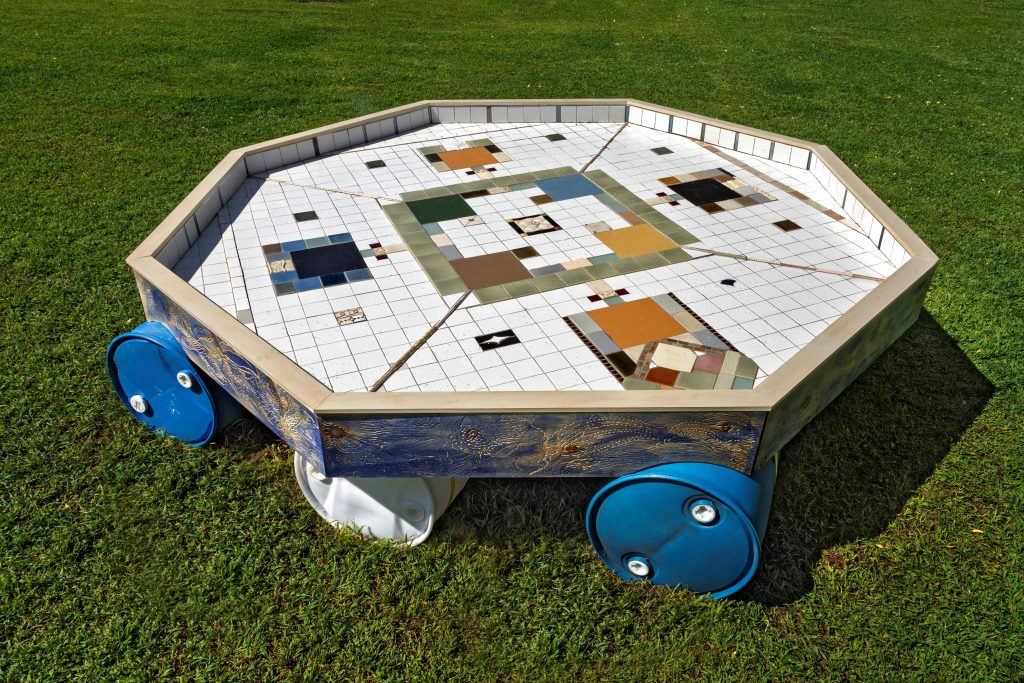
Bahar Behbahani, All water has a perfect memory. (Octagon), 2019, hard-carved pinewood panels, Lapis Lazuli pigment, mosaic, tile, plastic barrel, lashing strap, sandbag, 12 x 12 x 3 feet, Wave Hill, Bronx, NY. On view at Wave Hill through December 1st. Photo: Stefan Hagan
Bahar Behbahani, All water has a perfect memory.
Wave Hill, Bronx, New York
September 15 – December 1, 2019
Bahar Behbahani’s (b. 1973, Tehran, Iran) site-specific installation titled All water has a perfect memory. [the period is intentional] is settled somewhat precariously along the eight-acre wooded expanse at Wave Hill, the Bronx public garden and cultural center known for supporting dynamic contemporary art projects and exhibitions. The installation’s primary feature is the large presence of a land-bound raft constructed in the shape of an octagon, ornamented with inlaid mosaic and tile, and supported on plastic barrels. Behbahani’s structure fosters multiple discussions about the garden’s surrounding woodlands and ecosystems and engages in prescient ecological debates. At the same time, the artist’s centerpiece addresses the historical flux of migration and the restriction of geographical borders. The title aptly recalls a poetic line from writer Toni Morrison’s essay, “The Site of Memory”: “All water has a perfect memory and is forever trying to get back to where it was.” In her research-based practice, Behbahani heavily layers and builds upon her cultural and aesthetic references, and water plays a central biographical and performative role in her videos and paintings. Likewise, water functions as a primary visual and spiritual element in the Persian Gardens of Iran, the majestic walled paradises and civilian sanctuaries dating back to the sixth-century BC. Water was a foremost compositional cornerstone of these historic gardens that were organized on a fourfold plan around central pools or fountains from which flowed four channels. At Wave Hill, the manifestation of the octagonal pool, raft or “fountain,” accessorized with botanical panel designs, forges further connections to eight of the world’s contested rivers: the Euphrates, Ganges, Hudson, Karun, Mississippi, Rio Grande, and Wouri. Moreover, the octagon appears as both a sheltering and perilous object. As a stationary structure, it conjures the urgent political narratives on mobility and circulation that underline the fraught experiences of migrants and refugees. In the accompanying pamphlet, the artist explained these multifold references, stating that “the project made her think about the ‘complexity’ of building a ‘worthy raft,’ one that would be able to ‘move people, food, belongings as well as culture and memories to safety…” The project also questions broader horticultural concerns about what determines “native” flora and species. Additional technological components activate river sounds, a meditative element arranged by musician Maciek Schejbal. In the near future, the octagon will hopefully find a way to reach water, holding with it a bounty of new and old memories.



